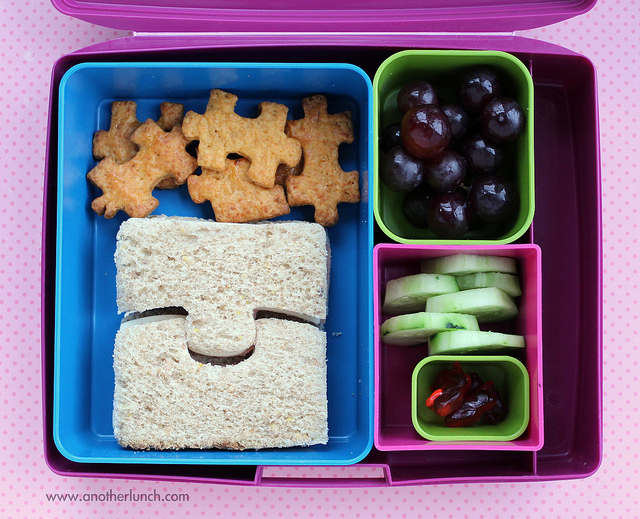Back to School: Tips for Packing Healthy Lunches

It’s that time again! The yellow buses are arriving and children are heading back to school with their freshly sharpened pencils and shiny new folders. For some parents, this means resuming another daily routine – packing lunches. Making sure your children eat healthy can take some planning, especially if they are selective eaters or if the school has restrictions on what they can bring.
As you know, children need nutritious food so their bodies grow and develop properly. Healthy meals help prevent obesity, cavities, iron deficiency, and osteoporosis, and help improve memory function and reduce absenteeism. A healthy diet is rich in fruits and vegetables, whole grains, and fat-free and low-fat dairy products.
Use these suggestions for packing nutritious, delicious, and fun lunches for your children:
- Find alternatives to lunchmeat. Most lunchmeat is highly processed. Other nutritious options include hummus and cheese, cream cheese and jelly, egg salad, pesto and cheese or tomato, tuna salad, and peanut butter and honey.
- Make “creative” sandwiches. Although whole-wheat bread is a nutritious choice, you may want to mix things up a bit so that your kids don’t get bored with the same lunch day after day. Try alternatives like whole-grain tortillas, whole-wheat pita, or even whole-grain waffles as a substitute for bread.
- Or … don’t make sandwiches at all! There’s no rule that lunch has to be a sandwich. Kids love snacks – so, pack a substantial “snack” for lunch. Cheese and whole-grain crackers, for example, or an apple with cheese slices and a side of pretzels could be a favorite. You could also purchase thermal containers and send hot soup or spaghetti and meatballs. A thermal container keeps cold items cold as well – consider a fruit and yogurt smoothie.
- Let them nibble. Kids love food in bite-sized pieces, which is why pre-packed lunches that you purchase in the supermarket are so popular. However, those items contain processed foods that are not the healthiest choices. So, create your own – you can use either a Bento-style lunchbox or small snack containers filled with nutritious foods. Things like small cubes of cheese, whole-grain crackers, and cut fruit or veggies can make for a fun lunch.
- Let them build their own. Another option is to pack “ingredients” in small containers so that your child can have a make-your-own-pizza day. Just include a kid-sized whole grain pizza crust, a container of tomato sauce, and some shredded cheese. Or, provide a nutritious tortilla wrap, pack it with a container of hummus and some shredded cheese and lettuce, and your child can make his or her own creation.
- Dip in! If you’re trying to get your kids to eat more fresh veggies, nothing is more enticing than something to dip. Pack a container of hummus or a yogurt-based or low-fat dip, along with carrot sticks, cucumber spears, or any other favorite vegetable. It will definitely make those veggies more appetizing for a discerning little one.
- Be creative. Sometimes, all it takes to make lunch fun and interesting is to cut cute shapes, add a silly picture, or throw in a little treat. You don’t need to be an artist to do this – use a cookie cutter to cut sandwiches into fun shapes or do it freehand. If making art from food isn’t your thing, try writing a joke or silly poem on a napkin and including it in their lunchbox. Anything that makes kids look forward to eating lunch is a good thing!
Remember, the key to healthy eating is to help guide your children into making nutritious choices that lead to life-long habits. As they get older, you won’t always be in control of packing their lunches, so they should understand why eating healthy is important. Even young children can take part in the decision process. Let them accompany you to the supermarket or farmers’ market to select the foods they like, or ask them to choose what they want in their lunches. The more involved they are in the process, the more they will understand about balanced meals and healthy choices.
References: Centers for Disease Control and Prevention
 The Daily Dose
The Daily Dose
Comments are closed.